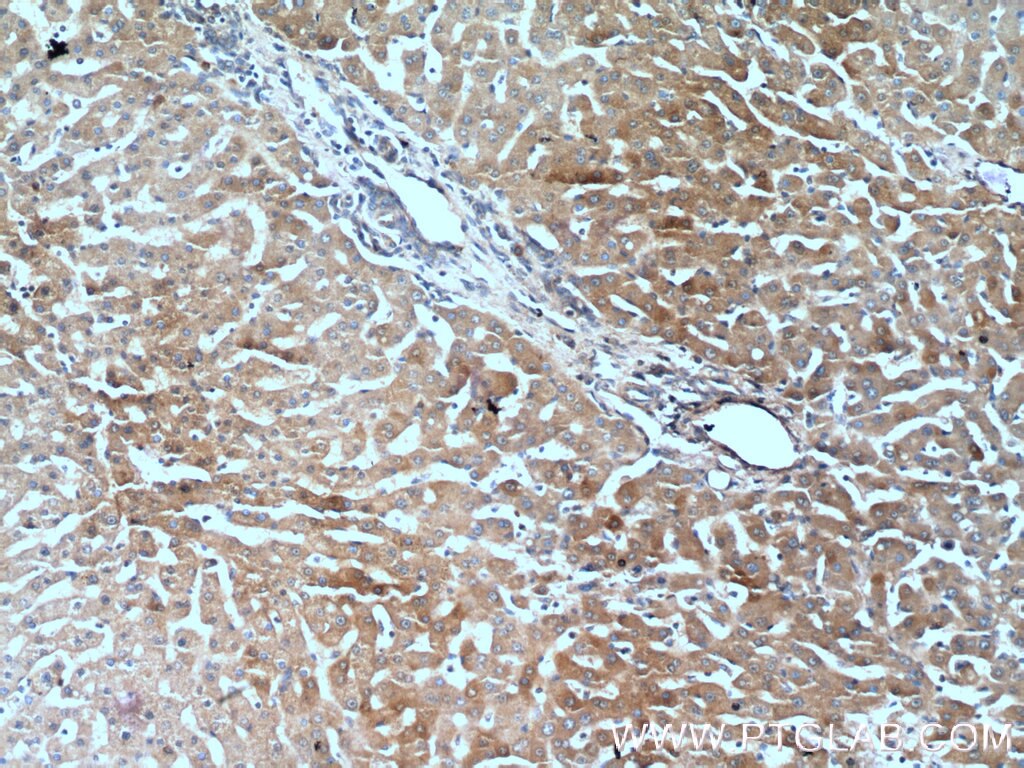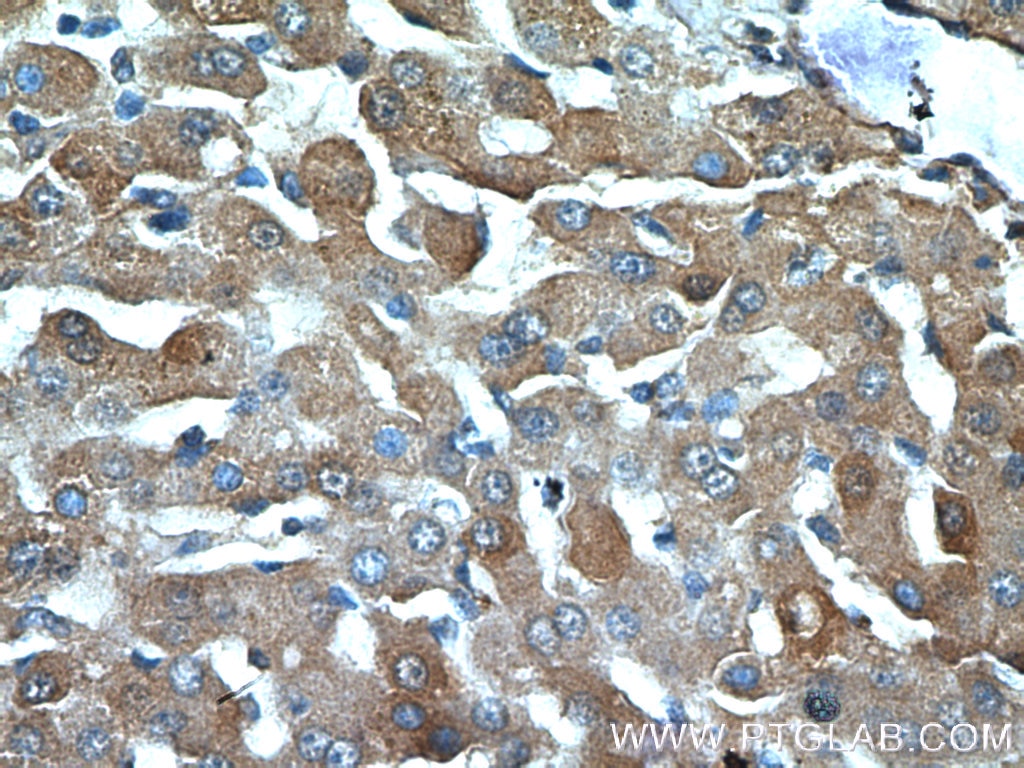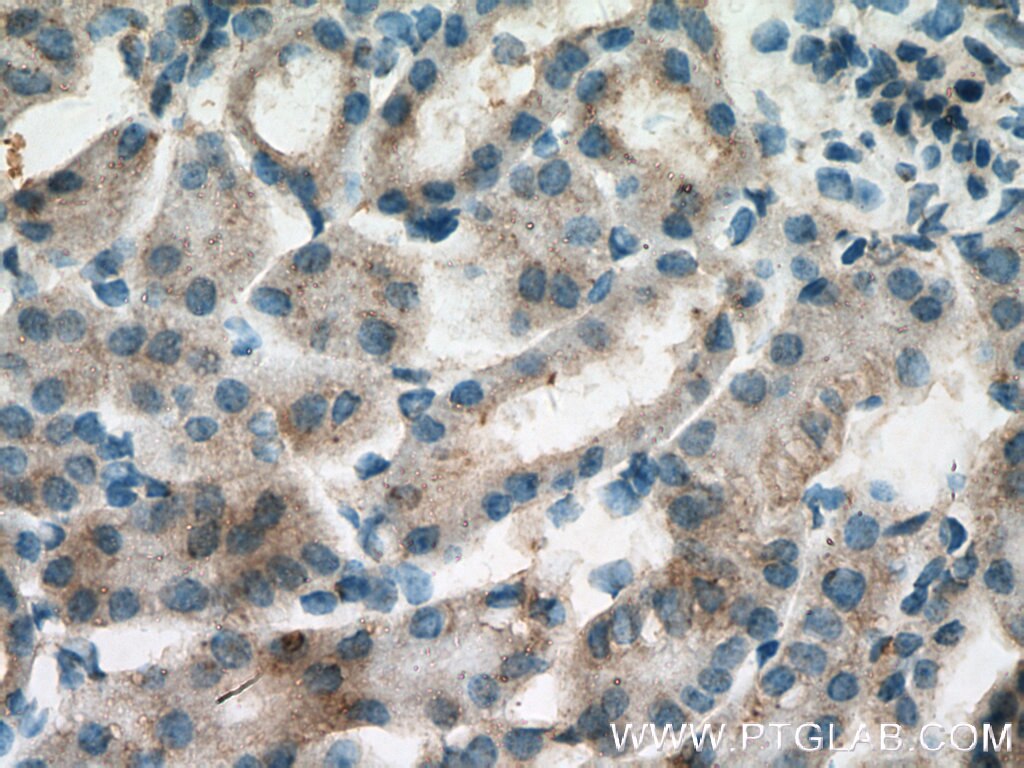Polycystin 1 Polyklonaler Antikörper
Polycystin 1 Polyklonal Antikörper für IHC, ELISA
Wirt / Isotyp
Kaninchen / IgG
Getestete Reaktivität
human, Maus
Anwendung
IHC, ELISA
Konjugation
Unkonjugiert
Kat-Nr. : 22263-1-AP
Synonyme
Galerie der Validierungsdaten
Geprüfte Anwendungen
| Erfolgreiche Detektion in IHC | humanes Lebergewebe, Mausnierengewebe Hinweis: Antigendemaskierung mit TE-Puffer pH 9,0 empfohlen. (*) Wahlweise kann die Antigendemaskierung auch mit Citratpuffer pH 6,0 erfolgen. |
Empfohlene Verdünnung
| Anwendung | Verdünnung |
|---|---|
| Immunhistochemie (IHC) | IHC : 1:50-1:500 |
| It is recommended that this reagent should be titrated in each testing system to obtain optimal results. | |
| Sample-dependent, check data in validation data gallery | |
Produktinformation
22263-1-AP bindet in IHC, ELISA Polycystin 1 und zeigt Reaktivität mit human, Maus
| Getestete Reaktivität | human, Maus |
| Wirt / Isotyp | Kaninchen / IgG |
| Klonalität | Polyklonal |
| Typ | Antikörper |
| Immunogen | Peptid |
| Vollständiger Name | polycystic kidney disease 1 (autosomal dominant) |
| Berechnetes Molekulargewicht | 463 kDa |
| GenBank-Zugangsnummer | NM_000296 |
| Gene symbol | PKD1 |
| Gene ID (NCBI) | 5310 |
| Konjugation | Unkonjugiert |
| Form | Liquid |
| Reinigungsmethode | Antigen-Affinitätsreinigung |
| Lagerungspuffer | PBS mit 0.02% Natriumazid und 50% Glycerin pH 7.3. |
| Lagerungsbedingungen | Bei -20°C lagern. Nach dem Versand ein Jahr lang stabil Aliquotieren ist bei -20oC Lagerung nicht notwendig. 20ul Größen enthalten 0,1% BSA. |
Hintergrundinformationen
Polycystin 1 (PC1) is also named as PKD1, and Autosomal dominant polycystic kidney disease 1 protein, and belongs to the polycystin family. PKD1 and PKD2 are formed component of a heteromeric calcium-permeable ion channel. PKD1 is considered an orphan, atypical G protein coupled receptor complexed with TRPP2 (Polycystin 2 or PKD2), a Ca2+-permeable ion channel (PMID:27214281). PKD1 is involved in renal tubulogenesis (PMID:12482949).
Protokolle
| Produktspezifische Protokolle | |
|---|---|
| IHC protocol for Polycystin 1 antibody 22263-1-AP | Protokoll herunterladen |
| Standard-Protokolle | |
|---|---|
| Klicken Sie hier, um unsere Standardprotokolle anzuzeigen |




